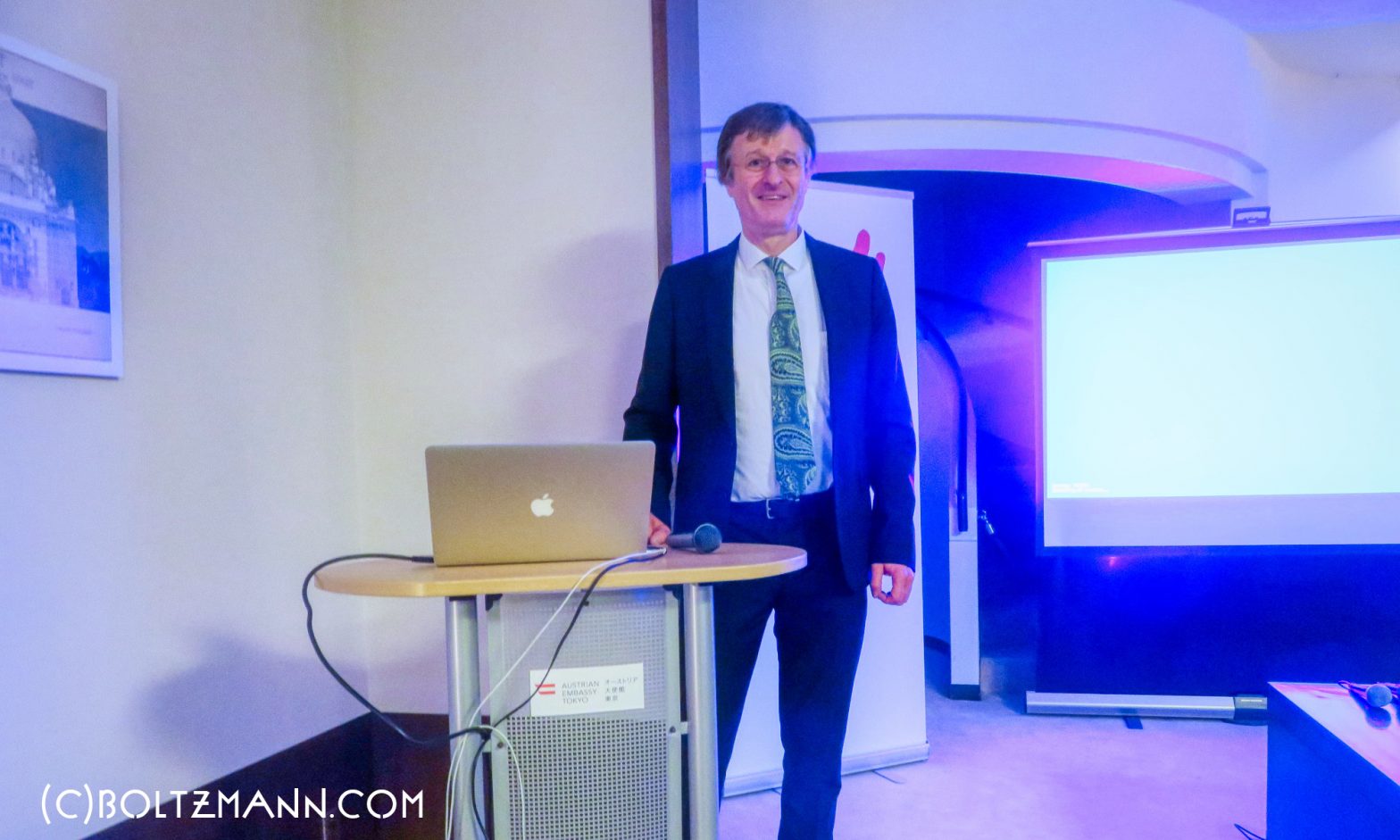Month: February 2019
-

11th Ludwig Boltzmann Forum Tokyo 2019
Energy. Entropy. Leadership. Gerhard Fasol, Chair 11th Ludwig Boltzmann Forum 2019, Wednesday 20 February 2019 at the Embassy of Austria, Tokyo. Program Welcome by the Ambassador of Austria, Hubert Heiss. Gerhard Fasol, CEO and Founder Eurotechnology Japan K, Guest-Professor Kyushu University, former faculty Cambridge University and Tokyo University, Past-Fellow Trinity College Cambridge “Today’s agenda. Entropy,…
-

Gerhard Fasol: agenda of the 11th Ludwig Boltzmann Forum. Entropy, information and Ludwig Boltzmann
Entropy, information and Ludwig Boltzmann. 11th Ludwig Boltzmann Forum 20 February 2019 Gerhard Fasol, Eurotechnology Japan KK, Founder and CEO. Guest Professor, Kyushu University. Former tenured faculty at Cambridge University and Tokyo University, Past Fellow Trinity College Cambridge. Agenda of the 11th Ludwig Boltzmann Forum Purpose of the Ludwig Boltzmann Forum is to bring outstanding…
-

Noriko Osumi: Towards understanding the mystery of neuro-development disorders: lessons from animal models
Towards understanding the mystery of neuro-development disorders: lessons from animal models, 11th Ludwig Boltzmann Forum, 20 February 2019 Noriko Osumi, Tohoku University, Vice-President. Professor of Neuroscience. Executive Director, United Centers for Advanced Research and Translational Medicine (ART). Director of the Center for Neuroscience. summary written by Gerhard Fasol The Autism enigma Autism spectrum disorder (ASD)…
-

Takaaki Kajita: Neutrino research in Kamioka and the status of Japanese basic science with large research infrastructures
Neutrino research in Kamioka and the status of Japanese basic science with large research infrastructures, 11th Ludwig Boltzmann Forum, 20 February 2019 Takaaki Kajita, University of Tokyo, Professor and Director of the Institute for Cosmic Ray Research. Nobel Prize in Physics 2015 for the discovery of neutrino oscillations Summary of Professor Takaaki Kajita’s keynote talk…
-

Hiroshi Nakamura: NTT DOCOMO driving digital transformation in the 5G era – co-create new values with partners
NTT DOCOMO driving digital transformation in the 5G era – co-create new values with partners, 11th Ludwig Boltzmann Forum 20 February 2019 Hiroshi Nakamura, NTT DOCOMO Inc. Executive Vice-President & CTO, Member of the Board of Directors, Executive General Manager of R&D Innovation Division Summary written by Gerhard Fasol Sharing our future around 202x –…
-

Peter Zoller: Quantum Computing and Quantum Simulation with Cold Atoms
Quantum Computing and Quantum Simulation with Cold Atoms, 11th Ludwig Boltzmann Forum 20 February 2019 Peter Zoller, University of Innsbruck, Professor of Physics, Director at the Institute for Quantum Optics and Quantum Information summary written by Gerhard Fasol Entanglement and Schrödinger’s cat In his 1935 article, “Die gegenwärtige Situation der Quantenmechanik” Erwin Schrödinger introduced “Schrödinger’s…